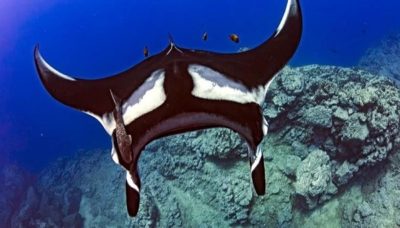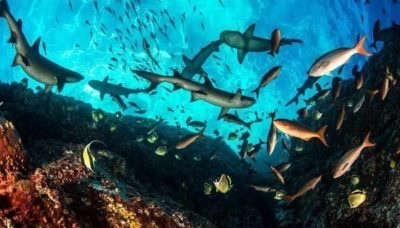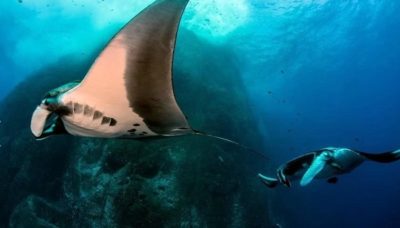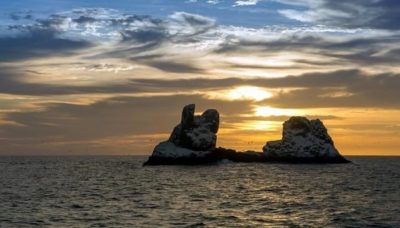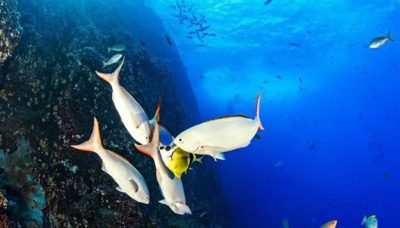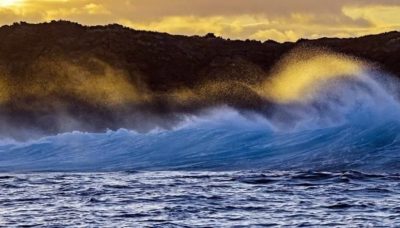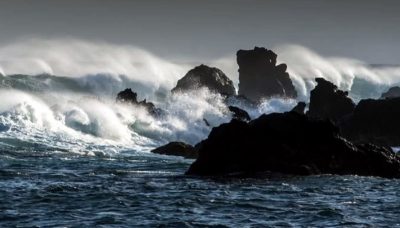The Archipelago of Revillagigedo was inscribed on the World Natural Heritage List of the United Nations Educational, Scientific and Cultural Organization (UNESCO), “because it contains exceptional values in its natural terrestrial and marine richness.”
The Revillagigedo Islands are located in the Pacific Ocean, about 800 kilometers west of Manzanillo, Colima, Mexico. It is a unique ecosystem of four uninhabited volcanic islands, which have been named Socorro, San Benedicto, Clarión and Roca Partida.
By Presidential Decree of President Benito Juarez, on July 25, 1861, the state of Colima was granted the sovereignty of the Revillagigedo Islands. Only large powerful vessels can reach the Revillagigedo archipelago in a journey of about 30 hours.
The origin of the Revillagigedo Islands is volcanic and began a little more than 3 million years ago, when there was a separation of tectonic plates in the area. Through this opening a large amount of magma emerged on the sea floor, which gradually reached 3 kilometers in height to stand out from the ocean surface and form the 4 volcanoes that we know today. Of these, Isla Socorro and Isla San Benedicto still have volcanic activity up to these days.
The island rises abruptly from the sea to 1,200 meters in the Evermann volcano. The most recent eruption was in 1993. Other recent eruptions were registered in: 1848, 1896, 1905, and 1951. The island of Socorro has military facilities that belong to the Mexican Navy, (Secretaría de Marina de México).
Biological and ecological importance
These islands boast a wealth of terrestrial and marine flora and fauna species of high biological value, some of them unique in the world.
In the terrestrial region endemic types of vegetation of great value are located in the preservation of the ecological balance, besides a fauna rich in reptiles, mammals and insects.
In the marine part there is a large variety of algae, corals, annelids, echinoderms, crustaceans, mammals such as whales, killer whales and dolphins, sharks, giant manta rays up to 7 meters wide and ranges of fish.
Revillagigedo has a significant number of endemic species of birds, fish, reptiles and flora. It is a natural laboratory in which different natural processes can be studied; on the other hand, its biological, geological and position characteristics on the high seas give it a privileged potential for fishing and/or extractive activities, as well as the training of human resources in marine biology, volcanology, ecology, management of wild resources and biogeography among other scientific areas.
For this great biodiversity, Revillagigedo is known as “The Mexican Galapagos“, referring to the place that inspired Charles Darwin to write The Origin of Species: the Galapagos Islands, located 972 km West off the coast of Ecuador (also in the Pacific).
It is a strategic site for the scientific progress of our country, since it has areas dedicated to its study that are key for the educational and scientific development and training of Mexican scientists.
There are 6 species of sharks in the islands: Hammerhead, Silver Tip, Galapagos, Punta Blanca de Arrecife, Whale, Tiger and occasionally Oceanic White-Tip.
Unfortunately, the introduction of cats and sheep on the Socorro Island has taken many of its edemic species to the brink of extinction. Currently, the National Commission for Natural Protected Areas works to eradicate non-native species from the islands that were introduced by by merchant sailors over the years, such as lamb and cat, mammals that have unbalanced the natural ecosystem of this magnificent place.
The giant manta rays of the Revillagigedo Islands are unique in the world; these manta rays can reach up to 7 meters wide and are characteristic of the archipelago, an adult can grow up to twice the mass of a horse.
Source: angelguardian.mx

